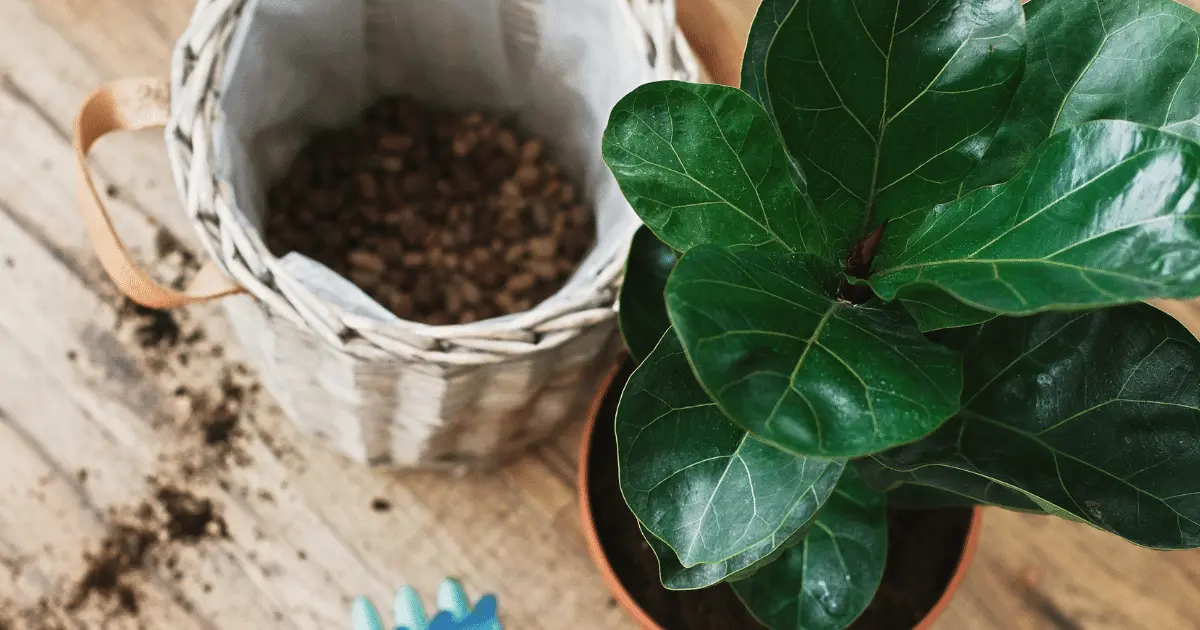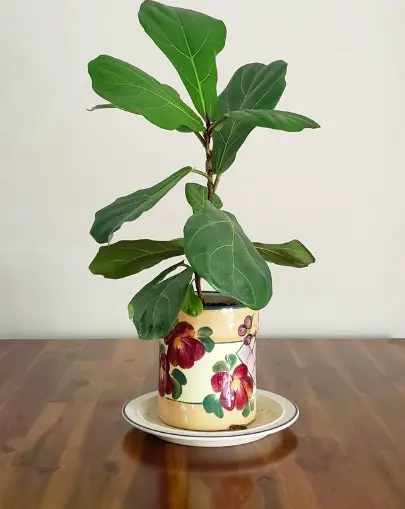Fiddle Leaf Figs have been in high demand for over a decade because garden propagators worldwide can’t get enough of them. Ficus lyrata is much desired for several reasons, including its broad violin-oriented leaves and towering heights.
Propagating and maintaining Fiddle Leaf Figs is highly cost-effective and simple enough for even first-time propagators. You could have a pot of fiddle leaf figs in your home in a couple of weeks just by following the steps outlined here.
Propagating Fiddle Leaf Figs

There are three popular methods employed in the propagation of Fiddle Leaf Figs:
- Air Layering
- Stem Cuttings
- Leaf Cutting
My favorite is by stem cuttings; it’s pretty straightforward and has the highest success rate. But let’s discuss each method briefly.
Propagating Fiddle Leaf Figs by Air Layering
Air Layering is an adventurous method of propagating Fiddle Leaf Figs because, although the process takes a bit longer (up to ten weeks), there’s always something new to learn and experience while carrying out the various stages in it.
Some tools to get handy include sphagnum moss, a clean, sharp knife, electrician’s tape, and polyethylene films.
As stem cuttings are the ideal method of propagating younger stalks, Layering is the best option for older stalks on a fiddle Leaf Fig plant.
- First, select a well-developed stem that can be bent into the soil surface.
- Next, find a perfect spot on the stem and peel off the outer tissue (cambium), including the leaves around this area.
- Now rub some rooting hormone on the surface of the peeled stem to hasten root development.
- Sphagnum moss can be used to cover the peeled area covered in polyethylene film.
- You can secure the film with twist vines or electrical tape at both ends, and if you’re worried about the set-up losing too much moisture, aluminum foil can cover the area.
- The set-up must be constantly kept moist; if it dries up, the process has failed.
- The principle here is that manufactured food is trapped around the cut stem once the phloem vessels are cut off.
- In a moist environment, the tissues in the area develop new buds that can be rooted into a new plant.
- The growing stem can be separated from the parent plant once the roots and leaves begin to develop.
Propagating Fiddle Leaf Figs by Leaf Cuttings
The leaf cuttings usually develop new roots within three to six weeks after propagation.
Leaf cuttings are ideal during the growing seasons (between late spring and early summer). Your cuttings should be prepared with the leaf nodes fully attached.
- Cut off the mature leaves below the nodes using a clean, sharp knife or scissors.
- The more the leaf node on your leaf cuttings, the better. An excellent leaf cutting has at least three nodes on it.
If you’re rooting the leaf cuttings in water, allow them to heal for a day or two before placing them in a glass jar of water; then, place the jar in a spot where there is sufficient indirect sunlight.
Ensure the water in the jar is changed regularly while waiting for the new roots to pop out.
It would be best if you didn’t propagate leaf cuttings in water during winter because the plant doesn’t grow well in water then, and its contact with water should be minimized. Best to target your propagation within the growing seasons.
They will be ready for transplanting to a soil mix potting once the roots are grown to a minimum of two inches in length.
You can also root your leaf cuttings directly in a Potting medium. Once the leaf cuttings are healed, pour your Soil Mix into the potting and place the calloused cuttings on the soil, with the nodes touching the soil surface.
You may dip your cutting tips in pure honey or other natural rooting hormones for faster rooting. Watering should be by misting the soil directly to maintain a moist growing environment for the young plants.
Now, place the pot under indirect sunlight, and the cuttings should begin to root after 3-4 weeks.
Propagating Fiddle Leaf Figs by Stem Cuttings

Stem cuttings best propagate Fiddle Leaf Figs because they root faster and easier. The selected stem for the cuttings must be healthy, bearing good foliage and multiple leaf nodes.
Nip off each stem cutting with its leaves and nodes fully attached to the mother plant, allowing the stem cuttings to heal for a few days.
Stem Cuttings can also be rooted in water or directly in a Soil Mix Potting. Rooting in water produces good roots for the new plants to develop while rooting in a Potting medium is a faster propagation method since there’ll be no need for transplanting afterward.
Sunlight Requirements for Propagating Fiddle Leaf Figs
Fiddle Leaf Figs should be potted at the best position for maximum sunshine reception. This usually falls around the South or West facing windows which promise up to eight hours of sunshine daily.
You can propagate them under direct sunlight when they’re fully grown, but they should be kept behind indirect sunlight in their early stages of growth.
Ensure the mature fiddle Leaf Figs get direct, unimpeded sunlight daily to grow longer stems and broader, fresher-looking leaves
Watering your Fiddle Leaf Figs
Ensure to only water moderately because excessive watering can be counterproductive. Expert gardeners even advise only a cup of water for every two feet of your figs.
Bottom watering is preferable to the top; I usually do my watering only when the top soil layer is dry and prickly.
Avoid treated water as much as possible because tap water is usually treated with chlorine and fluorine compounds which could lead to browning or ringing of the fig leaves.
Best Growing Conditions for Fiddle Leaf Figs

Fiddle Leaf Figs grow best in abundant moderate sunshine, moist and warm soil, and an excellent natural water supply.
They don’t do well around air vents, drafts, room heaters, and AC radiators, so keep them away from domestic heating places. Their preferred temperature range should be between 60°F-75° F (16°C to 24°C).
Fiddle Leaf Fig’s Nutrient Requirements
They demonstrate a higher demand for nitrogen. When applying fertilizer, I use an NPK 3-1-2 formula to supply their nitrogen needs.
They’re best propagated in a Soil Mix Potting rich in organic compounds and with good drainage and efficient soil aeration.
Peat is great for the fiddle Leaf potting mix. When combined with perlite, you can apply a balanced formula of two parts peat and one part perlite for excellent aeration of the soil mix.
A mildly acidic to neutral soil medium is ideal for propagating Fiddle Leaf Figs, usually within the range of 5.5 to 7.0.
Do Fiddle Leaf Figs Purify the air?
Fiddle Leaf Figs are excellent air-purifying and detoxifying plants that rid the air of organic compounds such as dioxins and formaldehyde.
A Fiddle Leaf Fig is ideal for interior decorating homes and office environments.
Its broad leaves bearing a violin outline interconnected in a dense network of veined foliage give an unmatched floral beauty.
This plant draws all attention to its towering height, which can be as high as eighteen meters, growing at a rate of 12-18 inches yearly.
Place it in any corridor in the building, and it instantly becomes a beautiful landmark; the best part is you’ll find it blooming and brimming under the sunshine brilliance for the next 25-50 years.
